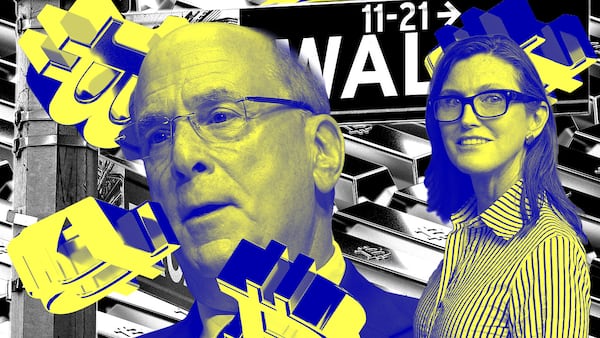- 2023 was filled with stories that defined DeFi.
- From Coinbase’s layer2 to MakerDAO’s Endgame, here are the stories that will keep influencing DeFi in 2024.
A version of this story appeared in our The Decentralised newsletter on January 2. Sign up here.
Happy new year. Tim here.
In this edition of The Decentralised, we’ll take a look back at the defining DeFi stories of 2023.
We picked the stories based on their impact and because they’ll likely shape DeFi news in 2024.
Let’s get into it.
#4: Coinbase launches a blockchain
In February, US crypto exchange Coinbase blindsided the DeFi space by announcing it would be launching its own Ethereum layer 2 blockchain.
The move surprised onlookers due to Coinbase’s ongoing struggle with regulators, and the lack of regulatory clarity surrounding DeFi in the US.
Nonetheless, Coinbase successfully launched its blockchain — named Base — in early August.
Coinbase Asset Management is proud to launch Project Diamond, an institutional onchain finance platform, in preparation to enter the Abu Dhabi Global Market RegLab sandbox.
— Coinbase Institutional 🛡️ (@CoinbaseInsto) December 12, 2023
Read more at our blog post below 👇https://t.co/D7Mr5WiphQ
Base has done better than many other layer 2s launched in 2023. Projects like friend.tech and Aerodrome were a hit, and helped propel deposits to protocols on Base to over $372 million.
And Base may just be getting started.
In early December, Coinbase Asset Management launched on Base Project Diamond, an Abu Dhabi-regulated platform that will let institutions create and trade blockchain-based versions of financial instruments.
Options for retail customers are increasing too. Projects like Seamless and Intentx are building high-quality, easy-to-use lending markets and trading platforms on Base.
#3: MakerDAO prepares for Endgame
When MakerDAO co-founder Rune Christensen revealed his so-called Endgame plan, DAO members and onlookers alike were skeptical.
The plan called for sweeping changes — including a total rebrand of the MKR and DAI tokens, a more streamlined governance process, and new subDAOs.
Many parts of the plan are still controversial, but many changes made to MakerDAO in 2023 have been beneficial.
The protocol is now estimated to bring in almost $90 million in profit over the coming year, up from around $23 million at the start of 2023.
Key to MakerDAO’s rising profits is its real-world asset strategy.
The DAO buys short-dated US Treasuries — which currently yield around 5% annually — and holds them to expiration, passing on most of the yield to holders of the protocol’s Dai stablecoin, and using some to buy back its MKR governance token on the market.
But Maker needs to stay agile to continue its upward trend in 2024.
The US Federal Reserve is now projecting a 0.75% drop in interest rates over the coming year, which will certainly impact MakerDAO’s bottom line.
#2: Solana emerges from the ashes
If someone had said a year ago that Solana would be one of the best performing crypto assets in 2023, I probably wouldn’t have believed them.
In early 2023, Solana was reeling from the collapse of FTX — one of its biggest benefactors. The blockchain’s native SOL token finished 2022 below $10, despite hitting an all-time high of $259 in 2021.
But Solana’s determined developers and die-hard community helped usher in what some called a “renaissance” this summer. They rebuilt Solana’s DeFi ecosystem away from the yoke of FTX and the predatory venture capital firms that had mired the blockchain up until that point.
But the Solana frenzy didn’t really start until November, when the blockchain’s biggest exchange aggregator, Jupiter, announced a token airdrop for users who had stayed with Solana through the crypto winter.
Then in December, liquid staking protocol Jito catapulted the blockchain into the spotlight again when its token airdrop netted recipients over $20,000 each.
#1: Ethereum staking goes wild
Ethereum’s April Shapella upgrade let Ether stakers withdraw their tokens from the blockchain’s staking contract for the first time since it went live in 2020.
The upgrade removed the last barrier holding many users back from staking: the ability to get their Ether back if they needed to.
What occurred next was an explosion in Ether staking. Since Shapella, an additional 10 million Ether — currently worth over $22.5 billion — has been staked on Ethereum.
A large part of this increase came from liquid staking — a service offered by DeFi protocols where they stake users’ Ether on their behalf and issue receipt-like liquid staking tokens in return.
The rise of Ether staking has created a baseline expectation for yield across Ethereum’s DeFi ecosystem. Stakers currently earn around 4.5% annually from staking with relatively little risk, making any yield strategy using Ether that earns less than that uncompetitive.
But staking is not without risks.
Slashing, a term that refers to taking some Ether from validators who don’t publish the correct data to the Ethereum network, is a constant worry.
Other concerns centre around the relatively new area of restaking, the practice of staking the same assets across multiple networks to amplify trust. Justin Drake, a researcher at Ethereum Foundation, told DL News in May that those building restaking protocols should treat them similarly to AI.
EigenLayer, a leading restaking protocol, is set to launch its mainnet’s second phase in the first half of 2024. Restaking hype already sent EigenLayer deposits past $1bn last month. There’s also a mushrooming sector of liquid restaking tokens.
Tim Craig is DL News’ Edinburgh-based DeFi Correspondent. Reach out with tips at tim@dlnews.com.









